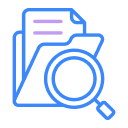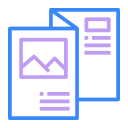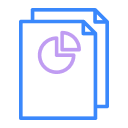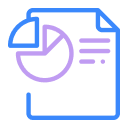Salesforce has rolled out its Data Cloud Winter ’25 release, and it’s brimming with powerful features designed to enhance data management, analysis, and customer engagement. This release focuses on streamlining processes, providing deeper insights, and offering more intuitive tools for users across different roles within an organization.
In this blog, we’ll take you through the most significant updates, explaining how they can empower your team to leverage data more effectively and improve overall business performance.
1. Simplified Data Cloud Setup: Get Started Faster
The Winter ’25 release makes it easier than ever to set up and configure Salesforce Data Cloud. Previously, administrators needed to assign specific permissions to access Data Cloud, but now, any Salesforce user with a system admin profile can jump right into the setup without additional steps.
This change not only simplifies the onboarding process but also allows users to benefit from the newly reorganized navigation. The intuitive setup experience is especially valuable for new users, as it shortens the time required to get familiar with the platform and start deriving value from Data Cloud.
2. Seamless Data Integration with the ZoomInfo Connector
With the ZoomInfo Connector now generally available, ingesting comprehensive company data into Salesforce is a breeze. This tool is particularly advantageous for sales and marketing teams, as it reduces the need for manual data entry and speeds up research processes.
The ZoomInfo Connector ensures that your Salesforce database is always up-to-date with accurate and detailed information, allowing teams to focus on higher-value activities like building customer relationships and closing deals. This integration is a must-have for anyone looking to streamline data processes and enhance the effectiveness of their outreach efforts.
3. Enhanced Data Export Capabilities for CRM Analytics (Beta)
The Winter ’25 release introduces a beta feature that allows users to export CRM Analytics assets connected to Data Cloud. This functionality opens up new possibilities for data analysis by enabling teams to share insights across different platforms or integrate analytics data into external tools.
Whether you’re looking to create custom reports or leverage analytics data in a third-party application, this feature provides the flexibility needed to perform deeper and more versatile analysis. It’s a significant step forward for teams that rely on data to inform their business strategies.
4. Effortless Report Creation with Single-Click Functionality
Generating reports in Data Cloud is now as simple as a single click. This update drastically reduces the time and effort required to create detailed, accurate reports, making it easier to track performance metrics, monitor KPIs, and identify trends.
For teams that need to make data-driven decisions quickly, this feature is invaluable. It ensures that up-to-date reports are always at your fingertips, enabling more agile and informed decision-making across your organization.
5. Customizable Smart Totals for Tailored Reporting
Smart Totals, which automatically calculate and include totals in your reports, can now be applied selectively. This means that you have full control over which reports display Smart Totals, allowing you to tailor your reports to your specific needs.
This customization capability ensures that your reports are as relevant and focused as possible, whether you’re presenting data to internal stakeholders or external clients. It’s an essential feature for anyone who wants to optimize the clarity and impact of their reporting.
6. Min and Max Aggregates for Date Fields: Highlight Key Data Points (Beta)
Highlighting minimum and maximum aggregates for date fields is now possible with this beta feature. This functionality allows users to quickly identify the earliest and latest dates within their datasets, making it easier to analyze timelines and trends.
This feature is particularly useful for teams that need to monitor project timelines, track changes over time, or understand the chronological context of their data. By bringing key data points into focus, it enhances the ability to make informed, time-sensitive decisions.
7. User Activity Monitoring and Usage Pattern Analysis
Understanding how your team interacts with Data Cloud is crucial for optimizing its use and ensuring that the platform is being utilized effectively. The Winter ’25 release offers new tools for monitoring user activity and analyzing usage patterns.
These insights can help you identify areas where additional training might be needed, optimize workflows, and ensure that your team is leveraging Data Cloud to its full potential. By keeping a close eye on how the platform is used, you can drive better adoption and more efficient use of resources.
8. Service Performance Optimization with Service Level Objectives
Tracking and optimizing service performance is now more straightforward with the introduction of Service Level Objectives (SLOs) in Data Cloud. This feature allows teams to set, monitor, and meet their service commitments directly within the platform.
SLOs help ensure that your team consistently delivers high-quality service, identifies potential issues before they impact customers, and maintains customer satisfaction. By tracking these objectives in real-time, you can proactively manage service levels and maintain operational excellence.
9. Strengthening Alumni Relationships with Einstein’s AI Power
Einstein, Salesforce’s AI-powered assistant, is now more integrated than ever with Data Cloud, helping organizations strengthen their relationships with alumni. By analyzing patterns and trends within alumni data, Einstein enables more targeted and effective engagement.
Whether you’re planning a fundraising campaign or organizing alumni events, this feature helps you identify the right individuals to reach out to and personalize your communications. It’s a powerful tool for any organization looking to deepen connections within its alumni network.
10. Data Graphs: Visualizing Data Cloud Segments for Better Insights
Data Graphs, a new feature in the Winter ’25 release, offers a visual representation of Data Cloud segments, making it easier to identify patterns and relationships within your data. This feature enhances your ability to analyze and understand complex datasets.
By making it easier to spot trends and correlations, Data Graphs empower data analysts and marketers to make more informed decisions about targeting and segmentation. It’s an invaluable tool for anyone looking to maximize the effectiveness of their data-driven strategies.
11. Faster Customer Segment Verification for Promotions
Verifying customer segments for promotions is now quicker and more efficient, thanks to new tools introduced in the Winter ’25 release. This streamlining of the verification process allows marketers to ensure that their campaigns are reaching the right audience with minimal delay.
This feature not only saves time but also increases the likelihood of a successful campaign by ensuring that promotions are accurately targeted. For teams that need to move fast in competitive markets, this enhancement can make a significant difference in campaign effectiveness.
12. Enhanced Engagement Insights with Form and Landing Page Data
Tracking how customers interact with your forms and landing pages is crucial for optimizing conversions. The Winter ’25 release adds new tools for gaining insights into these interactions, helping you understand what’s working and what isn’t.
These insights enable you to refine your forms and landing pages for better performance, ultimately leading to higher conversion rates and more effective marketing campaigns. By making data-driven adjustments, you can significantly improve the customer experience and drive better results.
13. Increased Capacity for Data Cloud Segments per Business Unit
Organizations with multiple business units will benefit from the increased capacity for Data Cloud segments in the Winter ’25 release. This update allows for the creation of more segments within each business unit, providing greater flexibility in managing and analyzing data.
This enhancement is particularly valuable for large organizations that need to segment their data across different brands, regions, or customer groups. It allows for more granular targeting and analysis, helping teams to deliver more personalized and effective marketing strategies.
14. Centralized Analytics and Goal Tracking in the Insights Workspace
The Insights Workspace has been upgraded to provide a more centralized location for viewing analytics dashboards and setting goal targets. This feature simplifies the process of tracking performance and staying aligned with your business objectives.
With all your analytics and goal-setting tools in one place, you can easily monitor progress and make adjustments as needed. This feature is essential for keeping your team focused and ensuring that you’re on track to meet your strategic goals.
15. Quick and Easy Setup of Intelligence Analytics
The Winter ’25 release makes setting up Intelligence Analytics faster and simpler with new, streamlined tools. In just a few clicks, you can get Intelligence Analytics up and running, allowing your team to start leveraging data-driven insights more quickly.
This ease of setup is particularly beneficial for organizations new to Intelligence Analytics, as it reduces the time and effort required to begin utilizing these powerful tools. By making it easier to get started, this feature helps you unlock the value of your data sooner.
16. Integrated Knowledge Management with Data Cloud
Finally, the Winter ’25 release integrates Knowledge and Unified Knowledge with Data Cloud, providing a more comprehensive view of your data. This integration ensures that your knowledge base is accessible and actionable within Data Cloud, enhancing your ability to make informed decisions.
By bringing all your data together in one place, this integration improves the efficiency of your workflows and helps you get more value from your data assets. It’s a key feature for organizations looking to maximize the impact of their data-driven initiatives.
FAQs
What is the primary focus of the Data Cloud Winter '25 release?
How does the ZoomInfo connector benefit users?
What are the key enhancements to data management in this release?
How does Data Graphs improve data analysis?
What are some of the new features for enhancing customer experience?

Nilamani Das
Nilamani is a thought leader who champions the integration of AI, Data, CRM and Trust to craft impactful marketing strategies. He carries 25+ years of expertise in the technology industry with expertise in Go-to-Market Strategy, Marketing, Digital Transformation, Vision Development and Business Innovation.


















